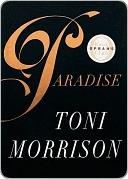More on this book
Community
Kindle Notes & Highlights
In order to describe and explore these questions I needed 1) to examine the definition of paradise, 2) to delve into the power of colorism, 3) to dramatize the conflict between patriarchy and matriarchy, and 4) disrupt racial discourse altogether by signaling then erasing it.
It is hard not to notice how much more attention is given to hell rather than heaven.
“They shot the white girl first and took their time with the rest.” With that opening sentence I wanted to signal 1) the presence of race as hierarchy and 2) its collapse as reliable information.
The novel places an all-black community, one chosen by its inhabitants, next to a raceless one, also chosen by its inhabitants. The grounds for traditional black vs. white hostilities shift to the nature of exclusion, the origins of chauvinism, the sources of oppression, assault, and slaughter. The black town of Ruby is all about its own
race—preserving it, developing myths of origin, and maintaining its purity. In the Convent race is indeterminate—all racial codes are eliminated, deliberately withheld. For some readers this was disturbing and some admitted to being preoccupied with finding out which character was the “white girl”; others wondered initially and then abandoned the question; some ignored the confusion by reading them all as black. The perceptive ones read them as fully realized individuals—whatever their race. Unconstrained by the weary and wearying vocabulary of racial domination, the narrative seeks to
...more
This highlight has been truncated due to consecutive passage length restrictions.


